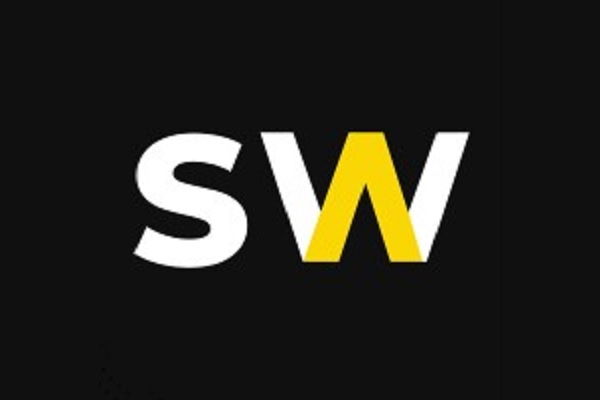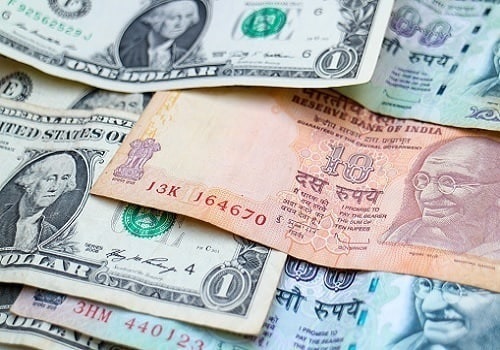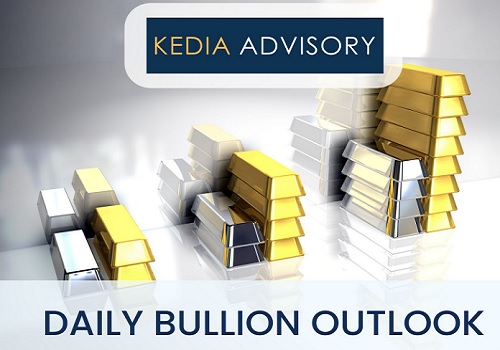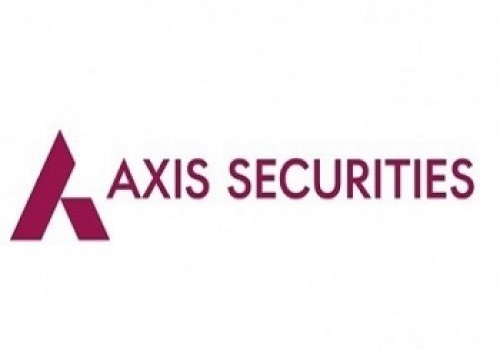Turmeric trading range for the day is 13268-14476 - Kedia Advisory

Gold
Gold prices rose by 0.17% to settle at ?90,875 as investors sought safe-haven assets amid concerns over escalating trade tensions. President Donald Trump’s upcoming tariff roll-out, expected to impact a broad range of countries, has heightened fears of a global trade war, pushing gold prices higher. Additionally, New York Federal Reserve President John Williams indicated that monetary policy remains moderately restrictive, aiming to curb inflationary pressures. Goldman Sachs raised its 2025 year-end gold price forecast to $3,300 per ounce from $3,100, citing robust ETF inflows and continued central bank buying. Asian central banks, particularly from China, are expected to maintain aggressive gold purchases over the next three to six years to reach their projected reserve targets. Data from the Hong Kong Census and Statistics Department showed that China’s gold imports via Hong Kong rose by 7.5% in February to 14.851 metric tons, up from 13.816 tons in January. In India, gold demand has slowed due to record-high prices, with jewellers focusing on financial year-end account closures. Indian dealers offered discounts of up to $33 per ounce over official domestic prices, slightly lower than last week’s $41 discount. Technically, the market is under short covering, with open interest declining by 2.77% to 18,549 contracts. Gold has immediate support at ?90,380, with further downside potential to ?89,890. On the upside, resistance is seen at ?91,380, and a breakout could push prices toward ?91,890.
Trading Ideas:
* Gold trading range for the day is 89890-91890.
* Gold rose as investors flocked to the safe-haven asset ahead of President Trump’s tariff roll-out
* Fed’s Williams said that monetary policy is "well positioned" for what the economy might do this year.
* Goldman Sachs raised its end-2025 gold price forecast to $3,300 per ounce from $3,100, with a target range of $3,250–$3,520.
Silver
Silver prices declined by 0.6% to settle at ?99,461 due to profit booking as investors awaited details on U.S. President Donald Trump’s proposed reciprocal tariffs. Markets remain cautious as Trump's push for aggressive trade policies raises concerns about potential retaliatory measures, inflationary pressures, and economic growth slowdown. Additionally, traders are closely monitoring upcoming U.S. labor market reports, including job openings, ADP employment data, and the monthly payroll report, which could provide further clarity on the Federal Reserve’s rate-cut trajectory. San Francisco Fed President Mary Daly expressed concerns over inflation, reducing her confidence in the expectation of two rate cuts this year. Meanwhile, Chicago Fed President Austan Goolsbee expects rates to be "a fair bit lower" in 12-18 months but warned that economic uncertainty could delay the next rate cut. The silver market is expected to remain in deficit in 2025 for the fifth consecutive year, with demand projected at 1.20 billion ounces. Industrial demand, a key driver, is forecast to rise by 3%, surpassing 700 million ounces for the first time. Technically, the market is under long liquidation, with open interest falling by 6.02% to 19,363 contracts. Silver has support at ?98,685, with a further downside risk to ?97,910. Resistance is seen at ?100,605, and a breakout above this level could push prices toward ?101,750.
Trading Ideas:
* Silver trading range for the day is 97910-101750.
* Silver dropped on profit booking as markets awaited details of U.S. President Donald Trump's reciprocal tariffs.
* President Donald Trump reaffirmed plans to impose reciprocal tariffs on all countries.
* Markets fear that these measures could trigger retaliation from major trading partners, stoke inflation, and weaken economic growth.
Crude oil
Crude oil prices settled marginally lower by 0.1% at ?6,118 as traders remained cautious ahead of U.S. President Donald Trump’s reciprocal tariffs announcement. The market is closely watching the potential impact of these tariffs on global fuel demand. However, downside movement was limited due to geopolitical risks, including Trump’s threats of secondary sanctions on Russian crude buyers and possible military action against Iran. Supporting prices, Russia ordered Kazakhstan to close two of its three oil export terminal moorings, which will force Kazakhstan to cut output. Sources indicate that repair work at the Caspian Pipeline Consortium terminal could take over a month. Additionally, OPEC+ is set to review its policy in an April 5 ministerial meeting, with expectations of proceeding with a 135,000 barrels per day production hike in May. In the U.S., crude oil inventories dropped by 3.341 million barrels, exceeding market expectations of a 1.6 million draw. Stocks at Cushing, Oklahoma, also declined by 0.755 million barrels. Gasoline inventories fell by 1.446 million barrels, while distillate stockpiles dropped by 0.421 million barrels. Technically, crude oil is under long liquidation, with open interest falling by 9.55% to 6,802 contracts. The commodity has support at ?6,082, with further downside potential to ?6,047. Resistance is seen at ?6,167, and a breakout above this level could push prices toward ?6,217.
Trading Ideas:
* Crudeoil trading range for the day is 6047-6217.
* Crudeoil dropped as traders await U.S. reciprocal tariffs announcement to assess the impact on fuel demand.
* Russia ordered Kazakhstan's main oil export terminal to close two of its three moorings
* Tariffs on buyers of oil from Russia would disrupt global supply and hurt, China and India.
Natural gas
Natural gas prices declined by 2.99% to settle at ?340.8, weighed down by record output in March and forecasts of milder weather reducing demand in the coming week. Despite this, record-high gas flows to LNG export plants in March provided some support. Warmer-than-normal temperatures through mid-April are expected to keep heating demand subdued, contributing to the market's weakness. For the first time since 2012, utilities added gas to storage in March, a rare occurrence for this time of year. U.S. gas stockpiles remain about 5% below normal, as January and February's extreme cold led to significant withdrawals. According to LSEG, gas production in the Lower 48 states hit a new record of 106.1 bcfd in March, surpassing February's 105.1 bcfd. U.S. utilities injected 37 bcf into storage for the week ending March 21, surpassing expectations of a 25 bcf build. The U.S. Energy Information Administration (EIA) projects natural gas output and demand to reach record highs in 2025, with dry gas production expected to increase from 103.1 bcfd in 2024 to 104.6 bcfd in 2025. LNG exports are forecasted to rise to 14.0 bcfd in 2025 and 16.2 bcfd in 2026. Technically, the market is under long liquidation, with open interest falling by 1.67% to 10,803 contracts. Natural gas has support at ?335.1, with further downside potential to ?329.4. Resistance is seen at ?351.2, and a breakout above could push prices toward ?361.6.
Trading Ideas:
* Naturalgas trading range for the day is 329.4-361.6.
* Natural gas eased on record output in March and forecasts for milder weather
* US LNG export feedgas hit monthly record in March
* US gas inventories on track for rare build in March
Copper
Copper prices gained 0.29% to settle at ?893.9, supported by strong Chinese economic data despite concerns over a potential global trade war stemming from U.S. President Donald Trump's impending reciprocal tariffs. The Caixin/S&P Global manufacturing PMI for China rose to 51.2 in March, up from 50.8 in February, driven by strong demand and export orders, signaling resilience in the manufacturing sector. Supply constraints also lent support to copper prices, with ongoing shortages of copper concentrate leading to negative treatment and refining charges (TC/RCs). Glencore’s force majeure on shipments from Chile’s Altonorte smelter has further tightened supply. Chile, the world's top copper producer, reported a 2.1% year-on-year drop in copper output in January to 426,889 metric tons. Meanwhile, China's refined copper production rose 3.7% in January-February to 2.3 million metric tons, offsetting some global supply concerns. The global refined copper market showed a 19,000 metric ton deficit in January, slightly narrower than December's 22,000 metric ton shortfall, according to the International Copper Study Group (ICSG). When adjusted for Chinese bonded warehouse inventory changes, the deficit stood at 17,000 metric tons in January, down from 51,000 metric tons in December. Technically, the market is seeing fresh buying, with open interest rising 0.24% to 7,986 contracts. Copper has support at ?890, with a potential downside to ?886.1. Resistance is seen at ?900.1, and a move above could push prices toward ?906.3.
Trading Ideas:
* Copper trading range for the day is 886.1-906.3.
* Copper rose as positive Chinese economic data outweighed concerns about a potential global trade war.
* The Caixin/S&P Global manufacturing PMI climbed to 51.2 in March from 50.8 in the previous month.
* Trump announced that the reciprocal tariffs he plans to introduce this week will apply to all nations.
Zinc
Zinc prices declined by 0.8% to settle at ?267.65 as concerns over impending U.S. tariffs overshadowed positive economic data from China. The market remained under pressure due to uncertainty surrounding U.S. President Donald Trump’s planned reciprocal tariffs, which could disrupt global trade. However, China's manufacturing sector showed resilience, with the Caixin/S&P Global manufacturing PMI surpassing expectations as factories accelerated shipments ahead of tariff impositions. The global zinc market deficit narrowed to 10,000 metric tons in January, down from 41,100 tons in December, according to the International Lead and Zinc Study Group (ILZSG). Supply concerns provided some support, as Shanghai Futures Exchange zinc inventories fell 6.9% from the previous week. Meanwhile, China's refined zinc production declined in February, down 8% month-on-month (MoM) and over 4% year-on-year (YoY), primarily due to fewer production days and maintenance shutdowns in key regions. Adding to supply constraints, Nyrstar announced a 25% production cut at its Hobart zinc operations in Australia starting in April due to financial difficulties. The Red Dog Mine in Alaska, responsible for 10% of global zinc output, is also expected to slow production in 2025 due to ore depletion. Technically, the market witnessed fresh selling, with open interest rising 7.73% to 2,939 contracts. Zinc has support at ?265.7, with a potential downside to ?263.7. Resistance is seen at ?270.7, and a move above this level could push prices toward ?273.7.
Trading Ideas:
* Zinc trading range for the day is 263.7-273.7.
* Zinc prices edged lower as uncertainty over U.S. tariffs outweighed positive data from China.
* China's manufacturing sector was expanding more than expected.
* Global zinc market deficit fell to 10,000 metric tons in January from 41,100 tons in December.
Aluminium
Aluminium prices declined by 0.69% to settle at ?244.6 as weak factory activity across Asia, coupled with concerns over U.S. tariffs, weighed on market sentiment. Japan and South Korea reported declining factory output, while Taiwan's manufacturing sector also weakened. The announcement by U.S. President Donald Trump regarding reciprocal tariffs on all nations further dampened market confidence, causing a broad sell-off in financial markets. On the supply side, global primary aluminium production fell 0.9% year-on-year in February to 5.645 million tonnes, according to the International Aluminium Institute (IAI). Despite this, major alumina producers in Guinea, Australia, and China ramped up output, driving alumina prices lower and improving smelter profitability. However, aluminium production growth is expected to slow, as China, the world’s largest producer, is constrained by government-imposed limits to curb excess supply and meet carbon emission targets. JP Morgan forecasts a significant aluminium market deficit of over 600,000 metric tons by 2025, due to a slowdown in global supply growth. China’s aluminium output for January and February rose 2.6% year-on-year to 7.32 million metric tons, driven by recovering profitability at smelters amid easing alumina supply constraints. Technically, the market saw fresh selling with a 0.16% increase in open interest to 3,656 contracts. Aluminium has support at ?243, with a potential downside to ?241.4. Resistance is seen at ?247.6, and a move above this level could push prices toward ?250.6.
Trading Ideas:
* Aluminium trading range for the day is 241.4-250.6.
* Aluminium dropped as Asia's factory activity mostly weakened in March.
* Japan's factory activity fell at the fastest pace in a year
* Aluminium inventories in warehouses monitored by the Shanghai Futures Exchange rose 1.4% from last Friday
Cottoncandy
Cottoncandy prices surged by 1.81% to settle at ?55,180 after the USDA report indicated lower-than-expected U.S. planting estimates. The USDA’s planting intentions showed U.S. all-cotton intended planting at 9.8 million acres for 2025, reflecting a 12% reduction from 2024. The Cotton Association of India (CAI) further cut its 2024-25 crop estimate by 2% to 295.30 lakh bales due to lower-than-expected yields in central India. A nearly 10% decline in the cultivated area is expected to shrink this year’s crop size significantly. Additionally, the Indian government reduced its cotton crop projection by 1.5% to 294.25 lakh bales in its second advance estimates. Regionally, Gujarat and Maharashtra are expected to see a reduction in cotton pressing by 4 lakh and 3 lakh bales, respectively, while Odisha could see a marginal increase. Cotton imports are forecasted to double to 32 lakh bales for the 2024-25 season, driven by lower domestic production. By the end of February, India had already imported 22 lakh bales. Despite higher global production, particularly in Brazil, mill demand remains subdued as mills are well-stocked. The U.S. cotton balance sheet for 2024/25 shows minimal changes, with ending stocks increasing slightly. Technically, the market is under fresh buying, with open interest rising by 4.23% to 222 contracts. Support is seen at ?54,460, with a potential downside to ?53,730, while resistance is at ?55,660, with an upside target of ?56,130.
Trading Ideas:
* Cottoncandy trading range for the day is 53730-56130.
* Cotton rose after USDA report showed lower-than-expected U.S. planting estimates.
* USDA's planting intentions report showed U.S. all-cotton intended planting of 9.8 million acres for 2025, a 12% reduction from 2024.
* CAI has further reduced its 2024-25 crop estimate by 2 per cent to 295.30 lakh bales.
* In Rajkot, a major spot market, the price ended at 25612.75 Rupees dropped by -0.11 percent.
Turmeric
Turmeric prices surged by 5.99% to settle at ?14,074 as lower-than-expected arrivals tightened supplies, triggering strong buying interest. Robust demand, especially from the export sector, supported the price rally, with turmeric exports reaching a four-year high, surpassing 2020’s volume of 1.75 lakh tonnes. Between April and December 2024, exports jumped 13% to 136,921.04 tonnes, compared to 121,170.97 tonnes during the same period in 2023. Notably, December 2024 saw a 46.94% rise in exports year-over-year. However, imports during the same period also increased significantly by 84.35%, though December’s monthly imports dropped by 44.69% compared to the previous year. On the production front, yields are expected to decline by 10-15% in key regions like Nanded, where small rhizomes and crop rot issues have been reported. Despite a 10% increase in turmeric acreage to 3.30 lakh hectares, untimely rains are likely to reduce overall productivity. Last year’s production stood at 10.75 lakh tonnes, and current estimates suggest output could remain flat or fluctuate within a 3-5% range. In Nizamabad, a major turmeric market, prices gained 0.94%, closing at ?13,549.4. Technically, the market is experiencing short covering, with open interest dropping slightly by 0.25% to 6,075 contracts. Immediate support is at ?13,670, with further downside potential to ?13,268. On the upside, resistance is seen at ?14,274, and a move beyond this level could push prices toward ?14,476.
Trading Ideas:
* Turmeric trading range for the day is 13268-14476.
* Turmeric rose as lower-than-expected arrivals restricted supplies, leading to strong buying interest.
* Exports continued to pick up in the second half of 2024, with shipments reaching a four-year high.
* New crop yields are expected to be 10-15% lower this year, with the Nanded region particularly affected.
* In Nizamabad, a major spot market, the price ended at 13549.4 Rupees gained by 0.94 percent.
Jeera
Jeera prices declined by 1.47% to settle at ?22,180 as demand remained subdued, with export orders being fulfilled from existing stock. Farmers still hold around 20 lakh bags of cumin, with only 3-4 lakh bags expected to be traded by season-end, leaving a substantial carry-forward stock of 16 lakh bags. Despite this, downside pressure remains limited due to steady domestic demand and increasing export activity, particularly from Gulf countries. Near-term supply remains tight, with limited arrivals from Rajasthan, while Gujarat's new crop is delayed by about a month due to adverse weather conditions during sowing. India’s cumin production for 2023-24 is estimated at 8.6 lakh tonnes from 11.87 lakh hectares, significantly higher than the previous year’s 5.77 lakh tonnes from 9.37 lakh hectares. Indian cumin remains the cheapest in global markets, currently priced at $3,050 per tonne, making it the preferred sourcing destination over China, where prices are $200-250 per tonne higher. Recent geopolitical tensions in the Middle East have also boosted cumin export demand from Gujarat. Exports during April-December 2024 surged by 70.72% to 165,084.40 tonnes compared to 96,701.43 tonnes a year earlier. December exports alone rose 56.45% month-on-month and 47.77% year-on-year, reflecting strong international interest. Technically, the market is witnessing long liquidation, with open interest declining by 0.12% to 2,592 contracts. Immediate support is at ?22,030, with further downside potential to ?21,890. On the upside, resistance is seen at ?22,340, and a breakout could push prices toward ?22,510.
Trading Ideas:
* Jeera trading range for the day is 21890-22510.
* Jeera dropped as demand is low and the current export business is being met from the available stock.
* The current season is expected to have similar production levels as last year due to better crop conditions and good sowing.
* However downside seen limited amid price support from domestic demand, as well as export activity from Gulf countries.
* In Unjha, a major spot market, the price ended at 21991.85 Rupees dropped by -0.01 percent.
Views express by all participants are for information & academic purpose only. Kindly read disclaimer before referring below views
























